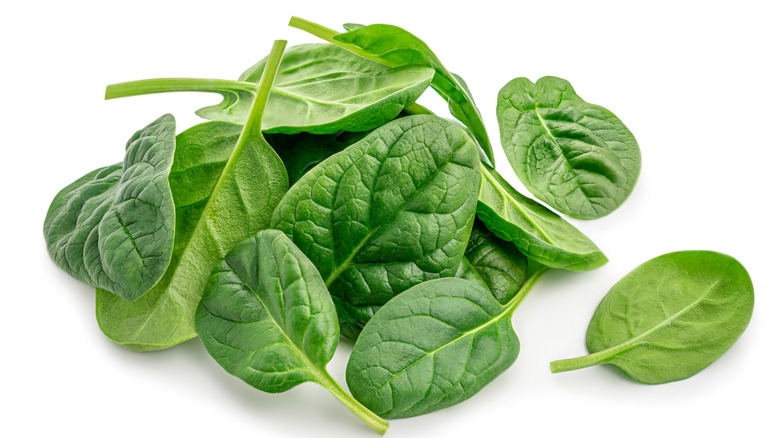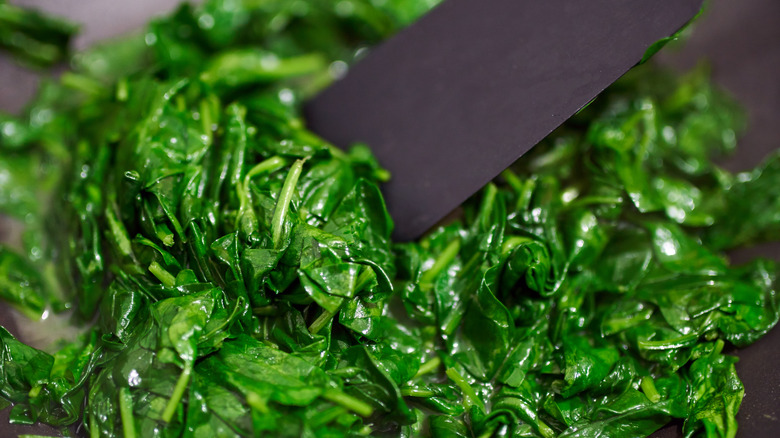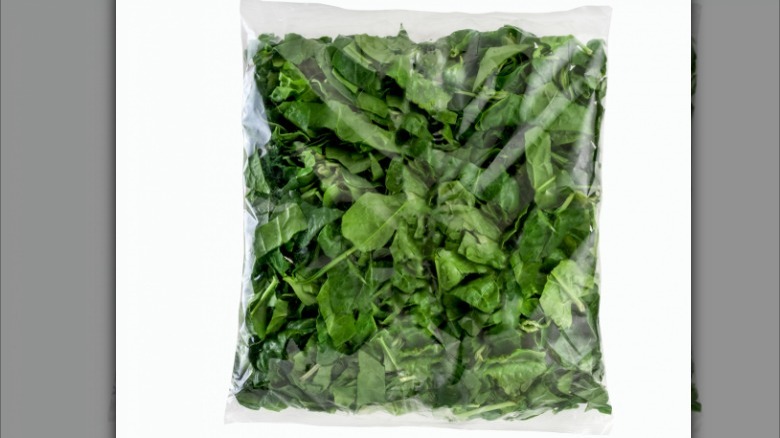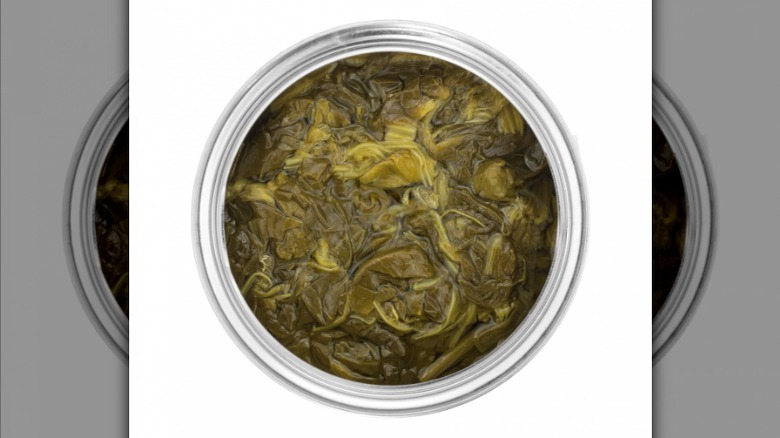Is It Worth Buying Canned Spinach Over Fresh?
Whether you choose to eat a bunch of fresh spinach purchased at the local farmers market or spinach already cooked and sealed in a can, both options provide many nutritional benefits. But how you decide to use the spinach will differ based on its packaging method, which affects its taste and texture.
Though canned spinach may have become associated with health and strength thanks to the cartoon character Popeye, in recent decades, fresh spinach has been the preferred way to eat the dark green leaf. Raw spinach is crisp and a little sweet and savory with a slight richness because of the minerals it contains. Perfect for a salad made with fennel and grapefruit, fresh spinach is a seasonal crop, although most grocery stores carry it year-round.
In comparison, spinach from a can is soft and slightly salty due to it previously being cooked and is better incorporated into a side dish with bacon, onion, and garlic. Canned spinach also loses some of its rich green color due to the cooking process — it's a dull green-brown, perhaps making it less appealing for some recipes.
Packed with nutrition
When it comes to choosing canned or fresh spinach, both options have lots of vitamins and minerals, such as fiber, folate, and iron. When eaten fresh, the leafy green also provides plenty of vitamin C — 47% of the daily value for a 100-gram serving. Not to mention plenty of vitamins A and K and riboflavin.
If you are looking to maintain the full amount of vitamins in fresh spinach, avoid boiling it in water, which will greatly reduce the amount it contains. The best methods for cooking fresh spinach are in the microwave or on the stovetop by steaming, stir-frying, and sautéing to maintain color and nutritional benefits. If following a low-sodium diet, read the nutritional label on canned spinach as it's salted before being preserved. Since it has already been cooked, canned spinach has higher calorie content. One cup of fresh spinach will have about 7 calories per cup compared to canned spinach with 50 calories per cup.
Different shelf lives
With a shelf life of several years, keeping a can of spinach in your pantry is a great way to quickly add another source of vitamins to a recipe you are making, such as a frittata or soup. Once opened, canned spinach will stay fresh for 3 to 4 days in the refrigerator.
Fresh spinach on the other hand has a short shelf life — its freshly picked leaves need to be consumed within about a week and a half. If the spinach is kept in a moist environment, it will become unusable even faster. As such, fresh spinach leaves should be kept dry and should only be washed right before use. If not used in that one-week timeframe, it's best to put spinach leaves in a freezer bag accompanied by a towel to keep the moisture away. Another option is to wash, trim, and blanch the spinach leaves before bagging them for freezer storage.
Canned spinach is budget-friendly
Canned spinach is a great way to save money because you don't need to worry about it going bad before you have time to cook with it. It's also considerably less expensive than a bag of fresh spinach at the grocery store. According to the United States Department of Agriculture, the average price of raw spinach is $3.83 per pound, while the average price of canned spinach is $1.13 per pound.
Another good reason for buying canned spinach versus fresh is that there will be a lot more spinach in one can than a bunch of fresh spinach. Because spinach is over 90% water, once cooked, the leaves are smaller, resulting in more leaves in a can than in a bunch of spinach.
Cooking with fresh vs. canned spinach
Fresh spinach is a highly versatile ingredient. It can be kept raw and added to a salad or blanched and then mixed with ricotta and used to stuff ravioli. The green leaves are also easy to add to soup, lasagna, or added to a sandwich. While canned spinach has more limited uses because of its already cooked state, a lot of the prep work — such as cleaning and chopping — has already been done before it was cooked, making it a handy item to have in the pantry.
When cooking with canned spinach, it needs to be drained first. While not necessary, rinsing the canned spinach prior to cooking will help to reduce the tin flavor that a lot of canned foods have. Some flavors that complement canned spinach especially well include savory meat, heat from hot sauce or peppers, and acid. Consider adding canned spinach to recipes where the ingredients are cooked together, allowing the flavors to meld like casseroles.
No matter how you decide to eat spinach, you'll be enjoying a flavorful and healthy food — even if it doesn't give you superhuman strength.




